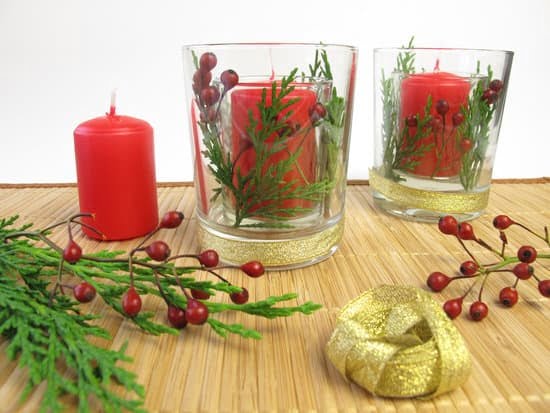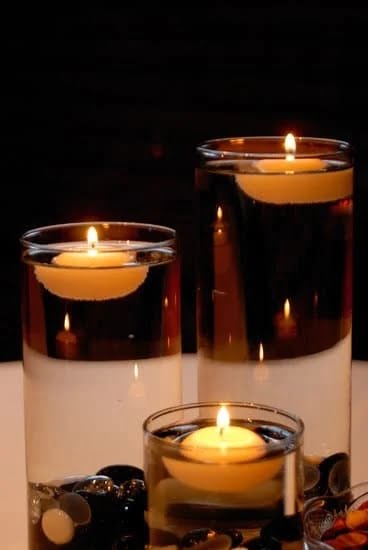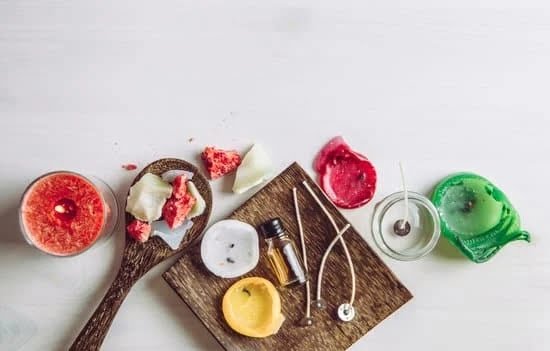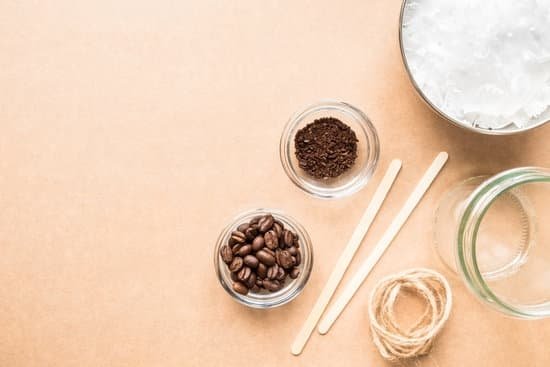Do you use essential oils in candle making? If not, you may be missing out on a world of benefits for both your mind and body.
Essential oils not only add captivating fragrances to candles but also offer various therapeutic properties that can enhance your overall well-being. In this article, we will explore the numerous advantages of using essential oils in candle making and how they can transform your homemade candles into powerful tools for relaxation, stress relief, and more.
Essential oils are highly concentrated plant extracts known for their distinct aromas and therapeutic effects. They have been used for centuries in various cultures for their medicinal properties and have gained popularity in recent years. When infused into candles, these oils release enchanting fragrances that can create a soothing atmosphere in any space.
One of the main benefits of using essential oils in candle making is their ability to promote relaxation and alleviate stress. Certain scents like lavender, chamomile, and ylang-ylang have calming effects that can help reduce anxiety and improve sleep quality. Others like citrus or peppermint are energizing and invigorating, making them perfect choices for boosting focus and productivity.
By incorporating essential oils into your homemade candles, you can personalize the scent according to your preferences and needs. Whether you aim to create a tranquil ambiance for meditation, a refreshing aroma for your workspace, or an inviting fragrance for social gatherings, understanding different types of essential oils and their properties is crucial. Let’s delve deeper into the world of essential oils and discover how they can elevate your candle making experience.
Understanding Essential Oils
Essential oils are one of the key ingredients in candle making that contribute to the overall fragrance and therapeutic benefits of the finished product. However, with so many different types available, it can be overwhelming to choose the right essential oil for your candles. This section will guide you through the different types of essential oils and their properties, helping you make informed decisions when creating your own scented candles.
Firstly, it is important to understand that not all essential oils are created equal. Some have strong scents that can overpower a room, while others have more subtle aromas. Additionally, each essential oil has unique properties that can impact mood and well-being. For example, lavender is known for its soothing and calming effects, making it a popular choice for relaxation candles. On the other hand, citrus oils like lemon or orange can help uplift and energize the atmosphere.
Furthermore, essential oils can also be divided into different categories based on their extraction method or plant source. Steam distillation is the most common method for extracting essential oils from plants such as lavender, eucalyptus, and peppermint. Cold pressing is often used to extract citrus oils like lemon or orange. Each extraction method results in different aromatic profiles and concentrations of essential oils.
It’s worth noting that some essential oils have specific safety considerations due to their potency or potential irritant properties. For instance, cinnamon or clove oil should be used with caution as they can cause skin irritation if not properly diluted. Always refer to reputable sources or consult with experts before using any new essential oil in your candle making process.
By understanding the different types of essential oils available and their unique properties, you can confidently select the ones that best suit your desired aroma and benefits for your candles. Experimenting with various combinations will allow you to create truly personalized scents that enhance ambiance and promote well-being during candle burning sessions.
Combining Nature’s Fragrances
When it comes to candle making, choosing the right essential oils is crucial for creating a pleasant and captivating fragrance. With so many options available, it can be overwhelming to decide which essential oils to use. However, by understanding the different types of essential oils and their properties, you can make informed choices that will enhance your candle-making experience.
There are a wide variety of essential oils available, each with its own unique scent profile and therapeutic benefits. For example, lavender essential oil is known for its calming and relaxing properties, making it a popular choice for candles used in meditation or before bedtime. On the other hand, citrus essential oils like lemon or orange can impart an energizing and uplifting aroma to your candles.
To choose the right essential oils for your candle, consider the mood or atmosphere you want to create. Think about whether you want a soothing scent for relaxation, an invigorating fragrance for focus and productivity, or a fresh aroma for a clean and refreshing ambiance. Research the different properties of essential oils and experiment with combining various scents to create your desired effect.
It’s important to note that when selecting essential oils for candles, be sure to choose high-quality oils that are specifically designed for candle making. Not all essential oils are suitable for use in candles as some may not produce a strong enough scent throw or may have additional ingredients that could interfere with the candle-making process. Look for pure essential oils without any additives or solvents.
| Essential Oil | Main Properties |
|---|---|
| Lavender | Calming and relaxing |
| Lemon | Energizing and uplifting |
| Vanilla | Warm and comforting |
| Eucalyptus | Cleansing and invigorating |
The Art of Blending
Creating unique aromas with essential oil combinations is an exciting and creative aspect of candle making. By blending different essential oils together, you can customize the fragrance profile of your candles and craft a scent that is uniquely yours. This section will explore the art of blending essential oils and provide tips on how to create harmonious and balanced combinations.
Understanding Fragrance Profiles
Before diving into blending essential oils, it’s important to have a basic understanding of fragrance profiles. Each essential oil has its own distinct aroma profile, ranging from floral and citrusy to woody and earthy. Some oils are top notes, which are lighter and more volatile, while others are base notes that are heavier and last longer. Understanding these characteristics will help you create well-rounded blends.
Start with a Base Note
When creating a blend, it is generally recommended to start with a base note oil. Base notes have a deep, rich aroma that provides a solid foundation for your fragrance. Oils such as patchouli, sandalwood, or cedarwood are great options for base notes. Begin by adding a few drops of your chosen base note oil to your melted wax or soy flakes to gauge its intensity before proceeding with other oils.
Building Middle and Top Notes
Once you have your base note established, it’s time to add middle and top note oils to create depth and complexity in your fragrance blend. Middle notes offer body and character to the scent while top notes provide the initial burst of fragrance that quickly dissipates. Experiment with different combinations such as lavender (middle note) blended with bergamot (top note) for a calming yet refreshing aroma.
Balancing Your Blend
As you add different essential oils to your blend, be mindful of achieving balance between the aroma profiles. Avoid overpowering scents by starting with small amounts of each oil and gradually increasing if necessary. Consider using a fragrance wheel or scent strips to help you assess how the oils interact with one another. Remember, blending essential oils is subjective, so trust your nose and make adjustments as needed until you find the perfect combination.
Creating unique aromas with essential oil blends is an art form that allows candle makers to unleash their creativity and create one-of-a-kind scents. By understanding fragrance profiles, starting with a base note, building middle and top notes, and balancing the blend, you can craft candles that evoke specific moods and emotions. Experimentation is key, so have fun exploring different combinations to discover your signature fragrance.
Aromatherapy in Candle Making
Candles have long been used as a way to create a calming and relaxing atmosphere. When combined with the power of essential oils, candles can become even more effective in promoting relaxation and stress relief. Aromatherapy, the practice of using scents to promote physical and mental well-being, is an excellent addition to any candle making routine. In this section, we will explore how essential oils can be used in candle making to harness their therapeutic benefits.
Essential oils are highly concentrated plant extracts that capture the natural fragrances and properties of various plants. They are known for their aromatic qualities as well as their potential health benefits. In candle making, these oils can be used to infuse scents into the wax, providing not only a pleasant aroma but also therapeutic effects.
Different essential oils have different properties, such as lavender being calming or eucalyptus being invigorating. By choosing the right essential oil for your candle, you can create an environment that promotes relaxation and stress relief.
When selecting essential oils for aromatherapy in candle making, it is important to consider both personal preference and desired effects. Some popular choices include lavender for its calming properties, peppermint for its uplifting scent, and chamomile for its soothing effect. You can also experiment with different combinations of essential oils to create unique blends that suit your individual needs.
Harnessing the power of essential oils in candle making allows you to not only enjoy their delightful scents but also benefit from their therapeutic qualities. Whether you’re looking to create a cozy ambiance for relaxation or seeking relief from everyday stressors, incorporating aromatherapy into your candles can enhance your well-being. So next time you light a candle, consider adding a few drops of essential oil to unlock the full potential of its therapeutic benefits.
| Essential Oil | Properties |
|---|---|
| Lavender | Calming, promotes relaxation |
| Peppermint | Uplifting, refreshing |
| Chamomile | Soothing, reduces stress and anxiety |
The Dos and Don’ts of Using Essential Oils in Candle Making
Do: Use High-Quality Essential Oils
When using essential oils in candle making, it is important to use high-quality oils to ensure a strong and long-lasting fragrance. Look for essential oils that are 100% pure, therapeutic grade, and sourced from reputable suppliers. Cheaper or synthetic oils may not provide the desired scent or may even have a negative impact on the quality of your candles.
Do: Measure Carefully
To achieve the right balance of scent in your candles, it is crucial to measure the essential oils accurately. Too much oil can lead to overpowering fragrances that might be unpleasant, while too little oil may not provide enough scent throw. Use a digital scale for precise measurements and follow the recommended guidelines provided by experts or manufacturers.
Don’t: Overheat Your Essential Oils
Essential oils are sensitive to heat, and subjecting them to high temperatures can cause them to lose their aroma or alter their chemical composition. To preserve the integrity of the oils, avoid exposing them directly to heat sources during the candle-making process. Instead, add the oils at the lowest possible temperature suitable for fragrance incorporation.
Don’t: Neglect Proper Labeling
Safety should always be a priority when working with essential oils in candle making. Be sure to label all containers and bottles clearly with the name of the oil used and any necessary safety precautions or warnings. This will help prevent any accidental misuse or confusion in the future.
Do: Conduct Patch Tests
Before incorporating a new essential oil into your candles, it is recommended to conduct patch tests to ensure compatibility with other materials you plan on using. Apply a small amount of oil onto the material you will be using (such as wax) and observe for any adverse reactions like discoloration or changes in texture. This will allow you to make any necessary adjustments or avoid potential issues when making your candles at a larger scale.
Do: Be Aware of Potential Allergies
Some essential oils may trigger allergies or sensitivities in certain individuals. It’s important to be aware of this and take necessary precautions, especially if you plan on selling your candles or gifting them to others. Make sure to include information about the specific essential oils used and any potential allergens on your product labels for transparency and safety reasons.
By following these dos and don’ts, you can ensure that your use of essential oils in candle making is not only enjoyable but also safe and successful. Remember that experimenting with different oils and techniques is part of the journey, so embrace your creativity while respecting the guidelines set forth by experienced candle makers.
Sustainable Scenting
Incorporating essential oils into eco-friendly candle making is not only a great way to create beautifully scented candles, but it also allows you to embrace sustainability and contribute to a healthier environment. By using natural ingredients and sustainable practices, you can enjoy the benefits of essential oils while reducing your carbon footprint. Here are some tips on how to incorporate essential oils into eco-friendly candle making:
- Choose sustainable wax: When making eco-friendly candles, it’s important to choose a wax that is renewable and biodegradable. Soy wax and beeswax are excellent options as they are derived from natural sources and have a lower environmental impact compared to petroleum-based paraffin wax.
- Use reusable containers: Instead of using single-use plastic or non-recyclable containers, opt for reusable glass jars or tin cans for your candles. Not only do they add a touch of elegance to your candles, but they are also better for the environment since they can be reused or recycled.
- Select organic essential oils: When purchasing essential oils for your candles, look for organic options that are derived from sustainable farming practices. Organic essential oils are free from synthetic pesticides, herbicides, and fertilizers, making them better for both your health and the environment.
- Avoid synthetic fragrance oils: Synthetic fragrance oils may provide a wide range of scents but they often contain harmful chemicals that can pollute the air when burned. By opting for natural essential oils instead, you can enjoy the benefits of aromatherapy while keeping the air in your home clean and healthy.
- Consider using recycled packaging materials: From labels to packaging boxes, aim to use recycled materials whenever possible. This helps reduce waste and lowers the environmental impact of your candle-making process.
By incorporating these practices into your candle making routine, you can create beautiful candles with sustainable scents that you can feel good about burning in your home. Not only will you enjoy the therapeutic benefits of essential oils, but you will also contribute to a greener and healthier planet.
Beyond Fragrance
One of the major advantages of using essential oils in candle making is that they offer more than just pleasing fragrances. Essential oils can provide additional benefits such as insect repellency and improved air quality in your surroundings.
When it comes to keeping insects at bay, certain essential oils have proven to be effective repellents. Citronella oil, for example, is widely known for its ability to repel mosquitoes and other flying insects. Adding citronella essential oil into your candles can not only create a pleasant outdoor ambience but also help keep annoying bugs away during those summer nights. Other essential oils like lemongrass, lavender, and peppermint are also known for their insect-repellent properties.
In addition to their insect-repellent abilities, essential oils can contribute to improved air quality in your home or workspace. Certain oils possess antimicrobial and purifying properties that help cleanse the air by eliminating harmful bacteria and viruses. Tea tree oil, for instance, is renowned for its antimicrobial effects and can be used in candles to improve indoor air quality. Eucalyptus oil is another excellent choice due to its decongestant properties which can assist with respiratory ailments.
By incorporating these additional benefits into your candle making process, you can create not only visually appealing and aromatic candles but also enjoy the advantages of insect repellency and improved air quality within your environment. This makes the usage of essential oils in candle making a multi-functional choice that adds value beyond fragrance alone.
- Citronella oil repels mosquitoes and flying insects
- Lemongrass, lavender, and peppermint oils also have insect-repellent properties
- Tea tree oil has antimicrobial effects that improve air quality
- Eucalyptus oil possesses decongestant properties useful for respiratory ailments
Troubleshooting and Tips
Using essential oils in candle making can be a rewarding experience, but it is not without its challenges. As with any craft, there may be moments when things don’t go as planned or when you encounter difficulties. This section will provide some troubleshooting tips and solutions to common issues that may arise when using essential oils in candle making.
One common challenge that candle makers face is uneven scent distribution in their candles. It can be frustrating when you find that the fragrance of your candle is concentrated in certain areas while other parts of the candle remain unscented. To address this issue, it’s important to ensure proper mixing of your essential oils with the melted wax before pouring them into the containers.
Take your time to thoroughly stir the mixture until the oils are evenly dispersed throughout the wax. Additionally, consider using a fragrance oil carrier or binder to help bind the essential oils with the wax and promote better scent distribution.
Another challenge that may arise is scent fading or loss over time. Essential oils can be volatile substances, and their aromatic properties may dissipate over time, resulting in a weaker scent throw in your candles. To combat this issue, consider using essential oils with stronger aromas or higher concentration levels.
You can also try adding more drops of essential oils than initially recommended to achieve a more robust fragrance. Additionally, store your finished candles in airtight containers away from direct sunlight and high temperatures to help preserve their scent for longer periods.
One more common challenge faced by candle makers is compatibility issues between certain essential oils and waxes. Some essential oils contain components that can react negatively with certain types of waxes, causing issues such as discoloration or poor burn quality.
To avoid this problem, do thorough research on which essential oils are compatible with the type of wax you are using for your candles. Experimentation is key; test small batches of candles using different essential oils to observe their compatibility and any potential issues before making larger batches.
By troubleshooting these common challenges and implementing the suggested solutions, you can overcome obstacles that may arise when using essential oils in candle making. Remember that every candle-making journey is a learning process, so don’t be discouraged if things don’t go perfectly the first time. With practice and perseverance, you can create beautifully scented candles that bring joy to yourself and others.
Conclusion
In conclusion, incorporating essential oils into your candle making journey can elevate your craft to a whole new level. Not only do essential oils add a delightful fragrance to your candles, but they also bring numerous benefits for both your physical and mental well-being.
By understanding the different types of essential oils and their properties, you can carefully select the ones that align with your desired outcome. Whether you want a soothing scent for relaxation or an invigorating aroma for focus and energy, there are essential oils suited to every mood and occasion.
The art of blending essential oils opens up endless possibilities for creating unique aromas that reflect your personal style and preferences. Experimenting with different combinations will allow you to discover new scents and find the perfect balance that speaks to you.
Perhaps one of the most exciting aspects of using essential oils in candle making is the potential for aromatherapy. The power of scent has been used for centuries to promote relaxation, relieve stress, and enhance overall well-being. By choosing specific essential oils known for their calming or uplifting properties, you can transform your candles into therapeutic tools that create a serene ambiance.
In addition to fragrance and aromatherapy benefits, it’s worth noting that essential oils can serve other purposes in candle making. Some oils have insect repellent properties that help keep pesky bugs at bay during outdoor gatherings. Furthermore, certain essential oils possess antibacterial or deodorizing qualities, which can improve air quality when lit. Embracing these additional benefits allows you to make candles that not only smell amazing but also provide practical advantages.
So why not embrace the art and science of essential oils in your candle making journey? With careful consideration of dos and don’ts, troubleshooting common challenges, and adopting eco-friendly practices, you can create candles that are not only visually appealing but also offer an olfactory experience like no other. Let your creativity soar as you explore the enchanting world of essential oil-infused candles and discover the joy of crafting something both beautiful and beneficial.
Frequently Asked Questions
Is it better to make candles with essential oils or fragrance oils?
The choice between using essential oils or fragrance oils in candle-making largely depends on personal preference and the desired outcome. Essential oils are natural extracts derived from plants and usually have a more subtle and pure scent compared to fragrance oils. They provide a more therapeutic experience with their potential aromatherapy benefits.
On the other hand, fragrance oils are synthetic blends specifically formulated for candles, offering a wide range of scents that may be stronger and longer-lasting than those achieved with essential oils. Ultimately, it is up to the candle maker to decide which type of oil best suits their specific needs in terms of scent, quality, and personal values.
Do all candles use essential oils?
No, not all candles use essential oils as their fragrance source. While some candle makers prefer using natural essential oils for their scents, many commercially available candles utilize fragrance oils due to their versatility and ability to replicate a vast array of fragrances.
Fragrance oils offer a wider variety of scents as they can be created synthetically to closely mimic various desired smells or create unique blends. This allows for greater creativity in the final product, appealing to different customer preferences and market demands.
Can you mix essential oils and fragrance oils in candles?
In theory, it is possible to mix essential oils and fragrance oils when making candles; however, there are important factors to consider before doing so. It is crucial to ensure compatibility between the specific oils being used because certain combinations may result in undesirable reactions or chemical changes within the candle wax or fragrance blend itself.
For example, mixing incompatible substances can lead to poor scent retention or cause the candle’s texture and burn characteristics to be negatively affected. Therefore, it is advisable for candle makers who wish to experiment with blending essential oils and fragrance oils to conduct small tests beforehand to evaluate compatibility and assess the resulting scent profile before incorporating them into larger batches for production purposes.

Welcome to my candle making blog! In this blog, I will be sharing my tips and tricks for making candles. I will also be sharing some of my favorite recipes.





